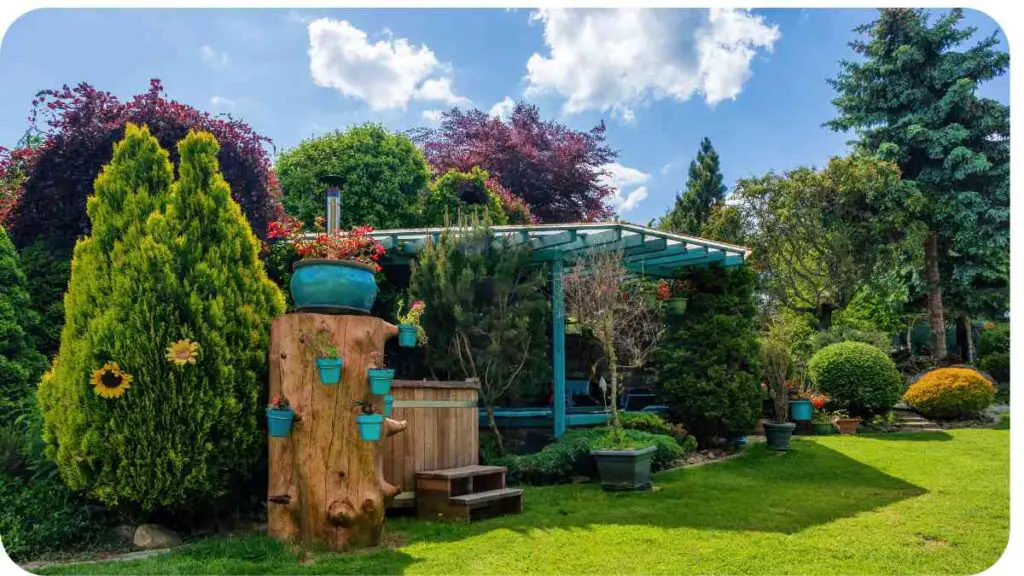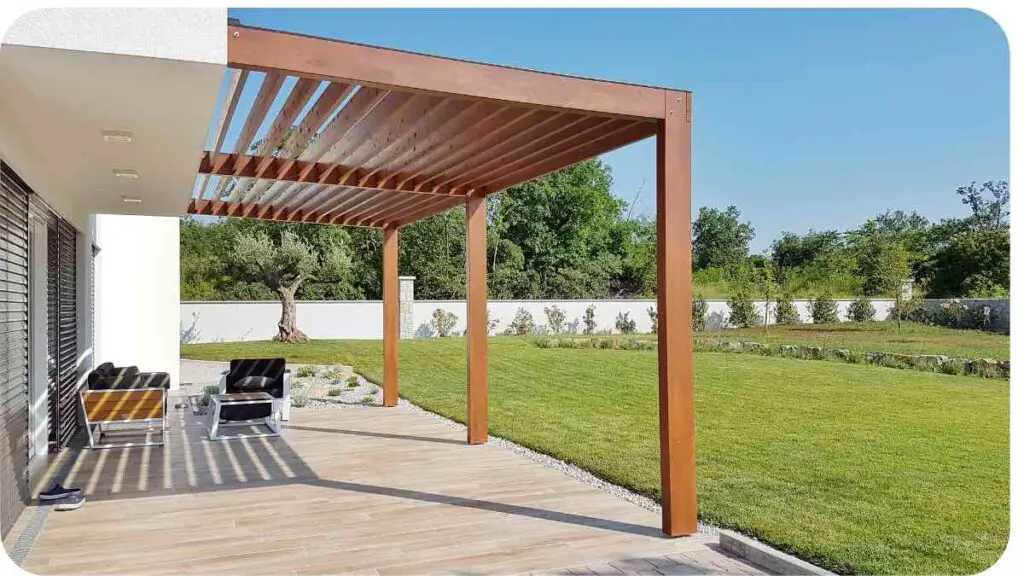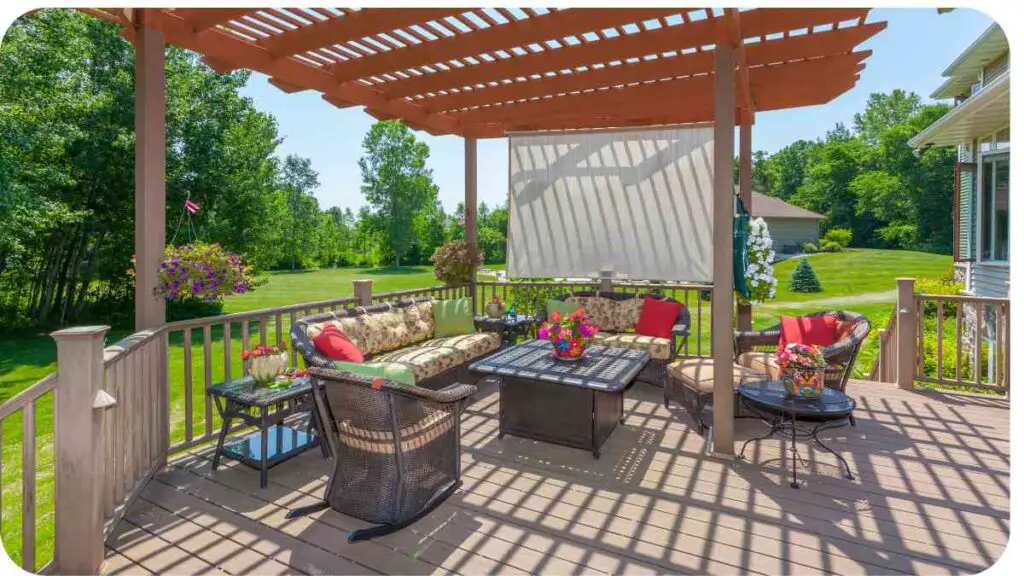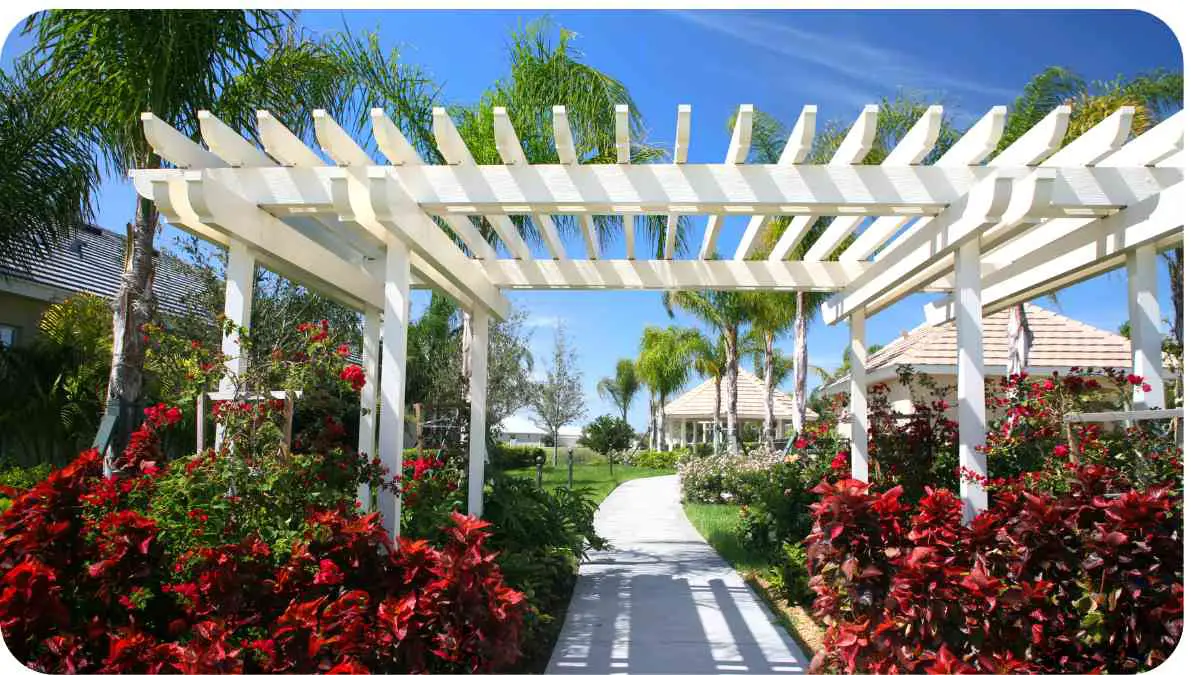Ever dreamed of transforming your pergola into a lush, green oasis? A vertical garden might just be the perfect solution. Imagine your pergola covered with vibrant greenery, adding a touch of nature to your outdoor space.
Vertical gardens, or green walls, offer a unique way to maximize space while enhancing aesthetic appeal. In this article, we’ll explore everything you need to know about creating a vertical garden on your pergola. From selecting the right plants to setting up and maintaining your garden, we’ve got you covered.
| Key Takeaway |
|---|
| Vertical gardens are ideal for maximizing space and adding greenery to small or unused areas. |
| Selecting the right pergola involves considering material, size, and design for structural support. |
| Green walls, hanging planters, and climbing plants are all effective options for vertical gardens. |
| Proper planning, installation, and maintenance are crucial for a successful vertical garden. |
| Choose plants based on climate, light needs, and maintenance requirements to ensure their health. |
| Regular watering, fertilization, and pest control will help keep your vertical garden thriving. |
| Consider both initial setup costs and ongoing maintenance expenses when planning your garden. |
| Troubleshoot common issues like plant health problems and structural concerns promptly. |
| Explore real-world examples for inspiration and practical insights into vertical gardening. |
| Additional resources can provide further guidance on optimizing your vertical garden setup. |
What is a Vertical Garden?

A vertical garden, also known as a green wall, is a gardening technique where plants are grown on a vertical surface. This can be a wall, a trellis, or, in this case, a pergola. Vertical gardens can be both functional and beautiful, serving as living artwork that breathes life into any space.
Enhance your outdoor living with rustic to modern pergola styles to perfectly complement your vertical garden. Choosing the right style can transform your pergola into a stunning focal point that integrates beautifully with your garden design.
Benefits of Vertical Gardens
Space Efficiency
Vertical gardens make the most of limited space, especially in smaller areas where traditional gardening might not be feasible. By growing upwards rather than outwards, you can create a lush, green environment without sacrificing precious floor space.
Aesthetic Appeal
There’s something magical about a wall covered in greenery. Vertical gardens can transform a bland pergola into a stunning focal point, adding texture, color, and a natural touch. They can also be customized with various plants to suit your personal style.
Improved Air Quality
Plants are natural air purifiers. They absorb carbon dioxide and release oxygen, which can help improve the air quality around your pergola. Plus, some plants can filter out pollutants, contributing to a healthier environment.
Discover how multi-functional pergola designs can add versatility to your space. By incorporating vertical gardens, you can create a functional and visually appealing outdoor area that serves multiple purposes.
Choosing the Right Pergola for Your Vertical Garden

Material Options
When selecting a pergola for your vertical garden, the material matters. Wood is a classic choice, providing a natural look that blends well with plants. However, metal and vinyl options offer durability and low maintenance. Consider the climate and how the material will hold up over time.
Size and Design
The size and design of your pergola will impact the type of vertical garden you can create. Ensure your pergola is sturdy enough to support the weight of the plants and any additional structures like planters or trellises. A well-designed pergola will enhance the overall look of your vertical garden and make it easier to maintain.
Types of Vertical Gardens Suitable for Pergolas
Green Walls
Green walls are a popular choice for vertical gardens. These are structures where plants grow directly on a wall or framework, creating a lush, green surface. They can be pre-planted panels or modular systems that allow for easy plant replacement.
Hanging Planters
Hanging planters are a versatile option that can be attached to the pergola’s framework. They come in various sizes and materials, making it easy to mix and match to create an interesting display. Plus, they can be rearranged as needed.
Climbing Plants
Climbing plants like ivy or wisteria can be trained to grow up trellises or directly on the pergola’s structure. These plants can create a natural, cascading effect that enhances the pergola’s design.
How to Set Up Your Vertical Garden on a Pergola

Planning and Design
Before you start planting, take the time to plan your vertical garden. Consider the amount of sunlight your pergola receives, the types of plants you want, and how you’ll arrange them. Sketch out your design to ensure everything fits together.
To ensure the longevity of your pergola and its vertical garden, weatherproofing tips are essential. Proper maintenance will help protect your outdoor structure from the elements and keep your garden thriving year-round.
Installation Steps
- Prepare the Pergola: Clean and inspect the pergola to ensure it’s in good condition.
- Install Supporting Structures: Depending on your chosen vertical garden type, install trellises, panels, or hooks.
- Add Soil and Planters: Fill planters with soil and place them on the supporting structures.
- Plant and Arrange: Position your plants according to your design, making sure they’re spaced properly for healthy growth.
Selecting Plants for Your Vertical Garden
Climate Considerations
Choose plants that are well-suited to your local climate. Some plants thrive in sunny environments, while others prefer shade. Be sure to select plants that will flourish in the conditions provided by your pergola.
Light Requirements
Different plants have varying light needs. Ensure your pergola receives enough light for the plants you choose. You might need to adjust your design or add supplemental lighting to meet these needs.
Maintenance Needs
Consider the maintenance requirements of your plants. Some may need frequent watering or pruning, while others are low-maintenance. Choose plants that match the amount of care you’re able to provide.
Maintenance and Care of Vertical Gardens
Watering and Fertilization
Regular watering and fertilization are crucial for a healthy vertical garden. Ensure your plants receive adequate water, and use a balanced fertilizer to promote growth. Be mindful of over-watering, which can lead to root rot.
For a more secluded outdoor retreat, consider creating pergola privacy with vertical gardens. This approach enhances privacy while adding a touch of natural beauty to your pergola space.
Pest and Disease Control
Keep an eye out for pests and diseases. Regularly inspect your plants for signs of trouble, such as discolored leaves or unusual spots. Address any issues promptly to prevent them from spreading.
Pruning and Training
Pruning helps keep your vertical garden looking its best. Trim back overgrown plants and remove dead or diseased parts. Training plants to grow in the desired direction will also help maintain the garden’s overall appearance.
Cost Considerations
Initial Setup Costs
The cost of setting up a vertical garden can vary widely depending on the size of the pergola and the type of garden you choose. Initial costs include materials, plants, and any additional structures or supports.
Ongoing Maintenance Costs
Ongoing costs include watering, fertilization, and any replacement plants or materials. Regular maintenance is essential to keep your vertical garden healthy and looking great.
Troubleshooting Common Issues
Plant Health Problems
If your plants aren’t thriving, check for issues such as inadequate water, poor soil, or pests. Addressing these problems promptly will help your garden recover and continue to flourish.
Structural Issues
Ensure that the pergola and supporting structures are stable and secure. If you notice any issues, such as sagging or instability, address them immediately to prevent damage to your garden.
Real-World Examples and Case Studies
Successful Projects
Explore some real-world examples of successful vertical gardens on pergolas. Learn from others’ experiences to gain insights and inspiration for your own project.
Enhance the ambiance of your vertical garden by exploring pergola lighting options. Proper lighting can highlight the lush greenery and create a cozy, inviting atmosphere in your outdoor space.
Lessons Learned
Review lessons learned from various projects to avoid common pitfalls and ensure your vertical garden is a success.
FAQs
Q: Can I grow vegetables in a vertical garden?
A: Yes, many vegetables can thrive in vertical gardens, including tomatoes, cucumbers, and peppers. Choose varieties that are suited to vertical growth.
Q: How often should I water my vertical garden?
A: The frequency of watering depends on the plants and climate. Generally, check the soil moisture regularly and water when needed.
Q: Can I install a vertical garden on an existing pergola?
A: Absolutely! Many vertical gardens can be added to existing structures with the right supports and planning.
Conclusion
Creating a vertical garden on your pergola is a fantastic way to add beauty and functionality to your outdoor space. With the right planning, plants, and care, your pergola can become a lush, green retreat. Whether you’re a gardening novice or a seasoned pro, this guide should help you get started on your vertical gardening journey.
Additional Tips and Insights
- Experiment with different plant combinations to find what works best for your space.
- Consider using a drip irrigation system for easier maintenance.
- Regularly update your garden with seasonal plants to keep things fresh and interesting.
Further Reading and Resources
- Save Space in Your Garden by Growing Vertically
Discover how vertical gardening can maximize space and enhance your garden’s productivity with practical tips and techniques. - 5 Ways to Enhance Your Pergola with Plants and Greenery
Explore creative ideas for integrating plants into your pergola to create a lush and inviting outdoor space. - How to Grow Vertically in Your Garden
Learn essential strategies for growing plants vertically, including selecting the right plants and setting up your garden for success.
FAQs
What is a vertical garden?
A vertical garden, or green wall, involves growing plants on a vertical surface such as a wall or a pergola. It’s a great way to maximize space and add greenery to your environment.
How do I choose the right plants for my vertical garden?
Select plants based on your local climate, the amount of sunlight your garden receives, and the maintenance level you can commit to. Opt for varieties that thrive in your specific conditions.
How often should I water my vertical garden?
Watering frequency depends on the plants and climate. Generally, check the soil moisture regularly and water as needed. Ensure good drainage to prevent over-watering.
Can I grow vegetables in a vertical garden?
Yes, many vegetables can grow well in vertical gardens, such as tomatoes, cucumbers, and peppers. Choose varieties suited for vertical growth and provide adequate support.
What are common issues with vertical gardens and how can I fix them?
Common issues include plant health problems and structural concerns. Address issues like pests, inadequate watering, or poor soil promptly. Ensure that your pergola and supporting structures are stable and secure.

I am Hellen James, a professional handywoman with expertise in improving home and garden spaces by using pergolas, gazebos, and tents.

